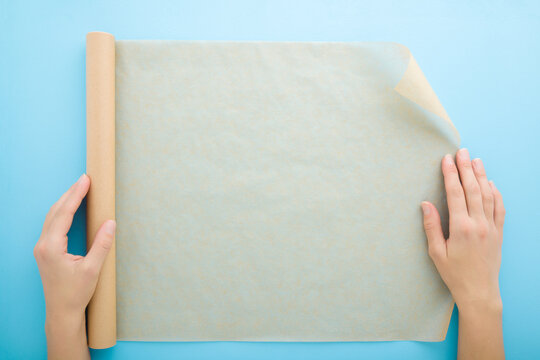Baking is a delightful activity that brings joy to many. Whether you’re a novice or an experienced baker, having the right tools can make a significant difference in your results. One of the most essential tools in baking is parchment paper. This versatile kitchen item can be a game changer, helping to prevent sticking, facilitate easy cleanup, and enhance the presentation of your baked goods. In this guide, we’ll explore how to choose the right parchment paper for your baking needs.
What Is Parchment Paper?
Parchment paper is a type of cellulose paper that is treated with acid to give it a unique non-stick surface. It’s commonly used in baking for lining pans, wrapping food, and creating packets for steaming. Unlike wax paper, which is coated with a thin layer of wax, parchment paper is heat-resistant and can withstand high temperatures, making it suitable for the oven.
Types of Parchment Paper
When selecting parchment paper, it’s important to understand the different types available. Here are the most common types:
Bleached vs. Unbleached
Parchment paper comes in two main varieties: bleached and unbleached.
- Bleached Parchment Paper: This type has a white appearance due to chlorine bleaching. It’s often preferred for its clean look, especially for presentation purposes. However, some bakers worry about the potential chemicals involved in the bleaching process.
- Unbleached Parchment Paper: This version retains a natural brown color and is free from chemical bleaching. Many bakers favor unbleached parchment for its more natural composition and slightly higher heat resistance.
Pre-Cut vs. Roll
Parchment paper is available in two forms: pre-cut sheets and rolls.
- Pre-Cut Sheets: These are convenient and save time. They fit standard baking pans and are easy to use, making them ideal for quick baking sessions. However, they might be more expensive than rolls.
- Rolls: Parchment paper rolls allow you to cut custom sizes to fit any baking dish. This flexibility is beneficial for those who often use different sizes of pans. However, it requires a bit more effort to cut and measure.
Silicone-Coated vs. Non-Silicone
Another factor to consider is whether the parchment paper is silicone-coated.
- Silicone-Coated Parchment Paper: This type has a silicone layer that enhances its non-stick properties. It’s great for sticky recipes, such as cookies or caramel, and can often be reused multiple times.
- Non-Silicone Parchment Paper: While it still has a non-stick surface, it may not perform as well as silicone-coated options for particularly sticky items.
Heat Resistance
One of the most critical factors in choosing parchment paper is its heat resistance. Most parchment papers can withstand temperatures up to 420°F (215°C). However, some specialty brands may handle higher temperatures. Always check the packaging for specific heat ratings to ensure it suits your baking needs.
Thickness and Durability
The thickness of parchment paper can vary, affecting its durability and performance. Thicker parchment paper is generally more robust and can withstand the rigors of baking better than thinner varieties. If you plan to use parchment paper for heavy batters or multiple layers, opting for a thicker option is advisable.
Food Safety and Chemical Additives
Safety is a paramount concern in any kitchen. When selecting parchment paper, check for food-safe certifications. Some brands may include chemical additives in their production process. Look for parchment paper labeled as “food-grade” or “chemical-free” to ensure it is safe for baking.
Cost Considerations
Cost is always a factor when purchasing baking supplies. Pre-cut sheets tend to be more expensive than rolls, but the convenience they offer may justify the price for some bakers. Evaluate how often you bake and how much parchment paper you typically use to determine the best value for your needs.
Environmental Impact
In today’s eco-conscious world, many bakers consider the environmental impact of their choices. Some parchment papers are made from sustainably sourced materials and are compostable. If this is important to you, look for brands that highlight their environmental practices.
Specialty Parchment Papers
For specific baking projects, you might consider specialty parchment papers designed for particular uses:
- Steam Parchment Paper: This type is designed for steaming food and is often used in Asian cooking. It’s typically thinner and allows steam to circulate while preventing sticking.
- Baking Liners: Some products are marketed as baking liners and may have additional features, like a non-stick coating or specific thickness for heavy-duty baking.
Tips for Using Parchment Paper
Once you’ve chosen the right parchment paper, using it effectively can enhance your baking experience. Here are some tips:
Lining Baking Pans
To line a baking pan, cut the parchment paper to size, ensuring it fits the bottom and sides. For round pans, you can trace the bottom onto the parchment and cut it accordingly. Lightly grease the pan before placing the parchment to help it stick.
Reusing Parchment Paper
If using silicone-coated parchment, you can often reuse it for multiple batches of cookies or other baked goods. Just make sure to clean off any residue before reusing it.
Avoiding Curling
If you find that your parchment paper curls up when placed in the pan, try crumpling it into a ball and then smoothing it out. This can help it lie flat against the pan.
Conclusion
Choosing the right parchment paper is crucial for achieving optimal baking results. By understanding the various types, their features, and how to use them effectively, you can enhance your baking experience. Whether you opt for bleached or unbleached, pre-cut sheets or rolls, the right parchment paper can make all the difference in your kitchen. Happy baking!


